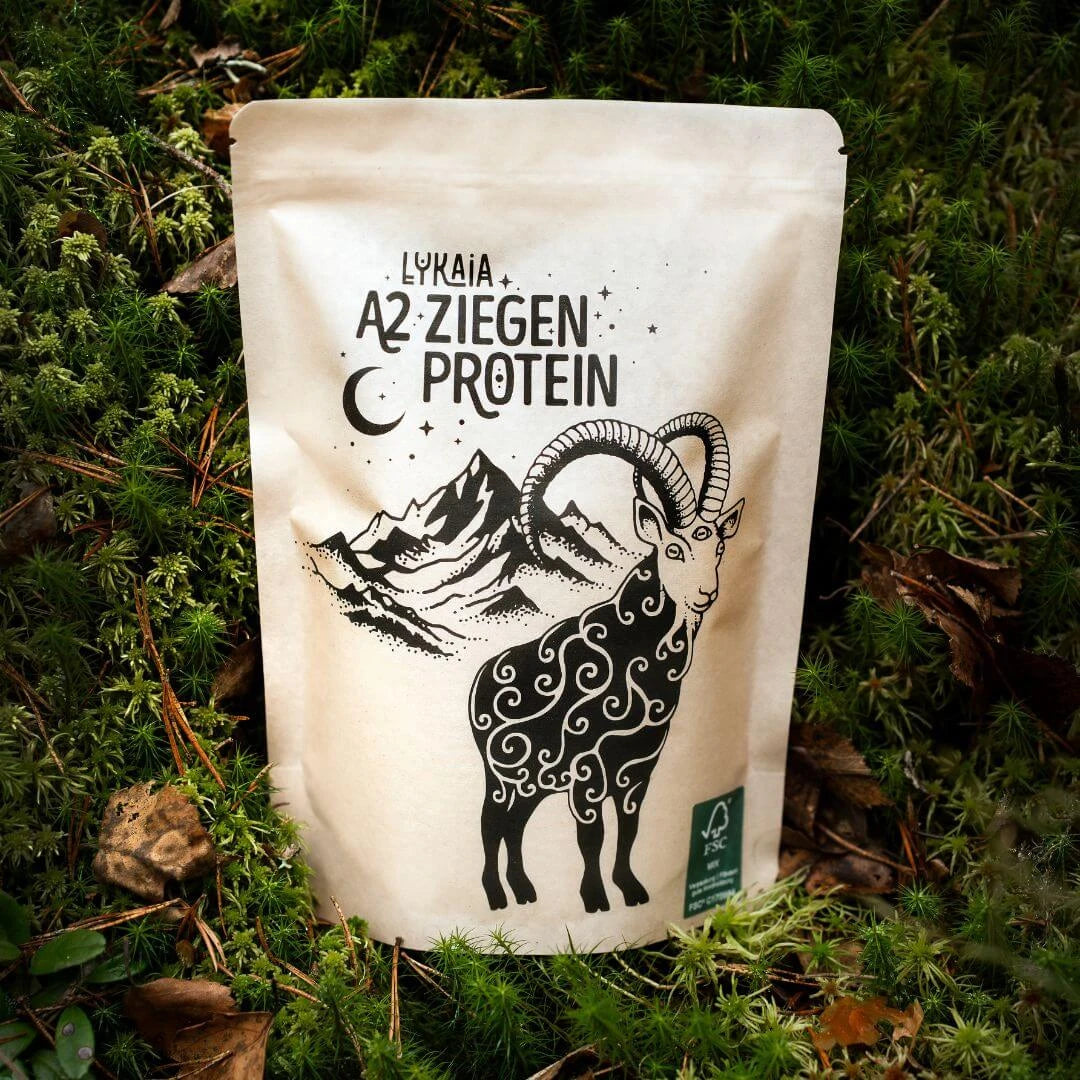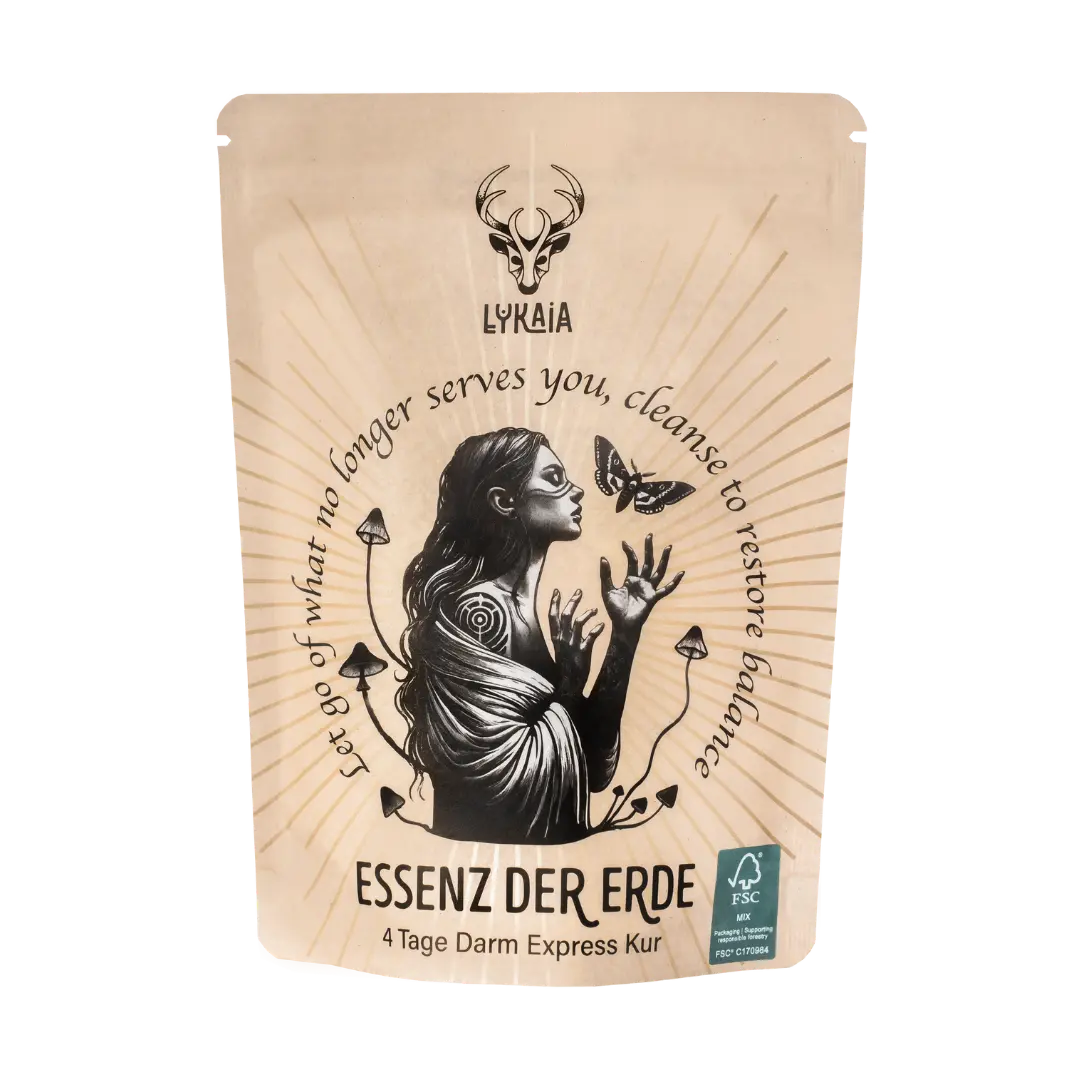Which milk if you have lactose intolerance?

In fact, as Northern Europeans we belong to a small part of the population that copes somewhat better with lactose. Globally, this is rather the exception. And here in our district , 15% of the population is still affected by lactose intolerance and has to resort to alternative dietary options [ 1 ]. Of course, there are now also plant-based milk alternatives, but anyone who has to deal with leaky gut and irritable bowel syndrome on top of their lactose intolerance (not an uncommon combination) knows that the lectins from cashew and soy milk are more likely to catapult themselves further into chaos to provide a remedy.
But there is another way.
In fact , 65% of global milk consumption comes not from cow's milk, but from goat's milk and this popularity has not (only) come from high-profile marketing campaigns or large-scale advertising. [ 2 ]
Ideally, every person is completely nourished by their mother's milk for at least the first six months of life. There is no better food in the world than mother's milk for this period of life, and this was demonstrated both in the laboratory and in practice.
But what did people do in the past when babies were stolen from their mothers or when breast milk was scarce? Studies on prehistoric drinking vessels found in southern Germany showed that goat's milk was used for babies as early as 3,000 years ago . [ 3 ]
Even back then, it was observed that goat's milk was tolerated significantly better in babies and did not cause any symptoms of milk intolerance or lactose intolerance . Even today, goat's milk is still predominantly used in baby food and follow-on milk. [ 4 , 5 ]

Ancient petroglyphs engraved into rocks at the Saimaluu Tash site in Kyrgyzstan. The oldest stones come from the Chalcolithic and Bronze Ages. [Image source: Canva]
But what about after those first few months are over and you're faced with milk for the rest of your life? In short: the benefits of goat's milk remain and the reasons for this better tolerance are diverse. We took a closer look at this and put together the 5 facts about goat's milk for you, why it might be better for you than cow's milk, even if you're lactose intolerant:
Goat milk...
- is less allergenic.
- is inherently homogenized.
- is easier to digest.
- rarely causes lactose intolerance.
- is closer to the metabolism of the human body
Ok, let's go into detail:
1. Goat's milk is less allergenic.
One of the most common food allergies in children under the age of three is cow's milk. Mild side effects include vomiting, diarrhea and skin rashes and severe effects can even extend to anaphylactic shock! The allergic reaction is not always due to lactose intolerance, but often also to a protein allergen called alpha-S1-casein, which is contained in high concentrations in cow's milk. The content of alpha-S1-casein in goat's milk is about 89% lower than in cow's milk [ 6 ]. A recent study of infants allergic to cow's milk found that almost 93% were able to drink goat's milk without discomfort. [ 7 , 8 ]
2. Goat milk is naturally homogenized.
If you keep fresh cow's milk next to fresh goat's milk in the refrigerator overnight, you would notice the next morning that the goat's milk looks the same as it did the night before, but the cow's milk has split into two different "phases." In the case of cow's milk, the cream in the upper part has separated from the skimmed milk below. This is a natural separation process caused by a compound called agglutinin.
Since we as Germans tend to like things neat and tidy, the milk that you can buy in the supermarket here is homogenized industrially. This means that the liquid milk is forced through a tiny hole under enormous pressure, destroying the cell walls of the fat globules it contains. This means that the fat component and the liquid component in the milk remain permanently mixed together.

The problem with such homogenization is that the cell walls of the fat globules, after being artificially “broken up,” release a superoxide (free radical), the so-called xanthine oxidase. It has been proven that xanthine oxidase is formed during the homogenization of cow's milk [ 9 ]. However, the influence it has on digestion and our metabolism has not yet been fully investigated. In a study by Massey University in New Zealand, it was shown in a simulated gastrointestinal tract that homogenization generally has a (detrimental) influence on digestion. [ 10 ]

Such homogenization is not necessary for goat milk! Goat's milk has smaller fat globules and does not contain agglutinin, keeping it naturally homogenized. This eliminates the possible problems of homogenization and brings us directly to the next advantage:
3. Goat milk is easier to digest.
This is due to the smaller fat globules and a higher content of medium-chain fatty acids . You may remember this from biology lessons, this example with the mouse and the elephant: The mouse has to eat much more food in relation to its body weight than an elephant has to eat in relation to its body weight. Why? Because the surface to volume ratio increases as the body becomes smaller. A mouse therefore has much more surface area over which it can give off heat than an elephant and therefore requires much more food. It is known as Bergmann's rule, which explains why mammals in colder regions are larger than their closely related species in warmer regions. [ 11 ]
Ok, that was a little digression, but what does that mean for the fat globules in goat's milk?
Because the fat globules in goat's milk are smaller, they have a larger surface area and therefore a higher attack surface in the gastrointestinal tract. This means that goat's milk can be digested more quickly and easily by us . [ 11 , 12 ]

Stone goats guarding a Chinese temple entrance.
4. Goat's milk rarely causes lactose intolerance.
All milk contains a certain level of lactose, also known as "milk sugar". A large part of the population suffers from a deficiency of the enzyme lactase, which is able to digest lactose. Goat's milk contains less lactose than cow's milk and therefore requires less lactase for digestion. Studies have also shown that the lactose in goat's milk generally leads to fewer problems for people with lactose intolerance. To date, it has not been possible to fully explain why exactly this happens. But it appears to be tolerable in small amounts, such as one glass a day. [ 12 , 13 , 14 ]
5. Goat's milk is closer to the human body's metabolism than cow's milk.
A baby usually starts life at around 3 - 4 kg, and one is also born weighing around 3 kg. In contrast, a calf (baby cow) weighs 35 - 45 kg at birth. Considering their body size, these two animals have very high and different nutritional requirements, both for maintenance and growth. Cow's milk is designed to turn a 45kg calf into a 350kg cow. Goat's milk and mother's milk are designed to grow a 3-4kg baby into an average 60-80kg adult or goat.
Since a goat (and human baby) needs less milk to grow than a cow, goat's milk is also more nutritious in less quantity. It contains more essential fatty acids such as linoleic acid and arachidonic acid as well as significantly larger amounts of vitamin B6, vitamin A and niacin. Goat's milk is also a far better source of the vital nutrient potassium. [ 15 , 16 ]
In terms of scale and nutrient quantities, everything fits together much better.

Weathered wall carving and painting from ancient Egypt. [Image source: Canva]
Which milk to choose if you have lactose intolerance: The conclusion from all these findings:
In short: goat milk and products made from it, such as our A2 goat casein, also contain lactose, but significantly less than cow's milk. For the reasons listed above, goat milk and its products are much easier to digest , which is why some people with a slight lactose intolerance can tolerate them well.
According to historical findings, the use of goats as livestock dates back to the period from 2200 to 800 years BC. BC and can be found in many different ethnic groups.
Have you already had experience with goat's milk? Maybe you have a lactose intolerance and are still looking for a high-quality goat-based protein concentrate? Find out more about goat protein powder here.
Your Lykaia team
0 comments






